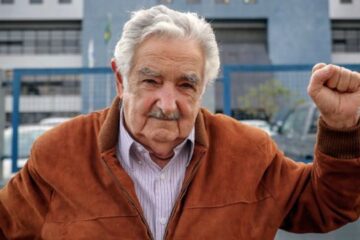
By Héctor Silva
Salvadoran President Sánchez Cerén, facing a surge in gang-related violence, is grasping at risky solutions. The 481 murders last month —about 16 per day— broke a 10-year record and represented a 52 percent increase over the same month in 2014. The soaring murder rate has deep roots going back to well before Sánchez Cerén and his FMLN predecessor, President Funes, came to power in 2009, but its immediate cause is the end last year of the three-way truce between the country’s two biggest gangs – the MS13 and Barrio 18 – and the government. Negotiated by the Funes administration in 2012, the truce provided a respite that, according to many observers, was doomed to fail because it split gang leaders, with those outside prison expanding their power, and allowed both gangs to expand their territorial control largely unfettered. Another factor is weak leadership and low morale among public security forces, especially the National Police, which has gutted confidence among the rank and file and prompted some frustrated commanders to take matters into their own hands. Extrajudicial executions of gang members in retaliation for the loss of police comrades have further driven up the death toll. Observers increasingly refer to El Salvador’s current situation as a “low-intensity conflict.”
Sánchez Cerén has tried an array of sometimes contradictory tactics in response to the gang problem and the violence, creating an appearance of incoherence and ineffectiveness. Without disputing estimates of the spiraling death toll, he has blamed the right wing and the media for creating a crisis atmosphere. Over the past 10 months, he has attempted —and failed— to implement “community policing” strategies, which languish due to inadequate funding and planning, and he recently led several hundred thousand people in a march for “life, peace, and justice.” With mounting pressure on the President to adopt hardline approaches, he has pledged greater resources to arm and deploy special anti-gang units, and last week he announced intent to supplement the 7,000 military troops already dedicated to law-enforcement duty with the creation of three new “Gang Cleanup Battalions.” The government says that these 1,200 elite Army troops, strikingly reminiscent of the “Immediate Reaction Infantry Battalions” (BIRIs) that committed grave human rights abuses when deployed during the civil war, will be under civilian police control.
The President’s moves are fraught with danger. His zigzags signal weakness to his ambitious political opponents and the gangs alike, and his political liabilities will only mount if, as almost all observers expect, the new battalions escalate the war in a manner that fuels extrajudicial killings and other human rights violations. Criticism from advocates of dialogue with the gangs, including negotiators involved in the previous truce, further weaken him. The fact is that the gangs, taking advantage of decades of state neglect of key sectors of society, have established strong bases of support in areas where the state’s presence and credibility are already nil or worse. The shift toward a militarized strategy, moreover, runs counter to the tragic lessons learned in Honduras and Guatemala. Going after the maras will entail battle in marginalized urban and rural areas that should be Sánchez Cerén’s and his FMLN party’s natural constituencies. In a lose-lose situation, Sánchez Cerén may be opting for the surer loss.



